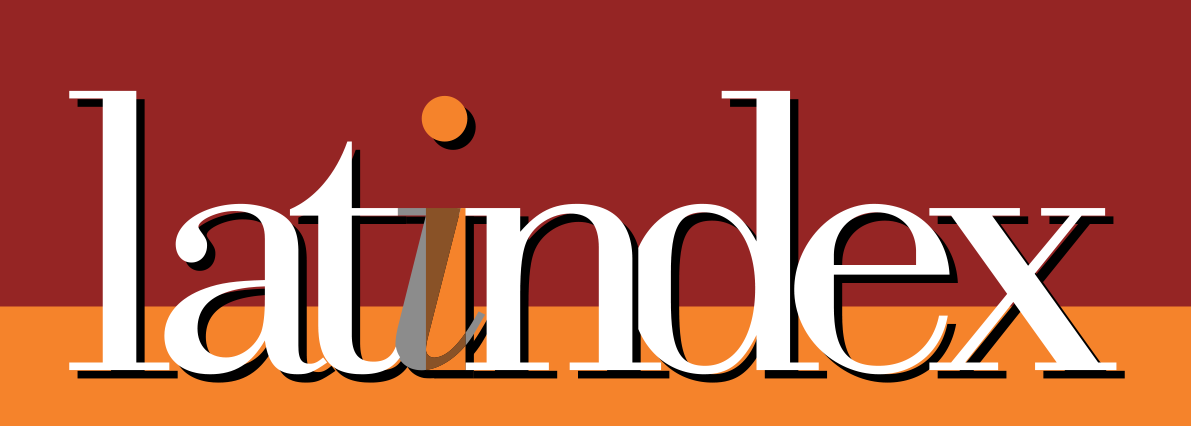Guidelines for authors
Metanoia is an annual academic journal that publishes specialized articles and essays, in either Spanish or English, which display sufficiently deep and original theoretical reflection to contribute to the development of new areas of discussion in the field of philosophy.
All manuscripts submitted for review undergo a blind peer review process and are checked using plagiarism detection software to ensure the originality of the content and to prevent issues related to research ethics.
Authors can download this guide via the PDF version “Guidelines for authors”.
1. TYPES OF DOCUMENTS ACCEPTED
Metanoia primarily considers academic articles for review but also welcomes essays and book reviews.
- Articles are argumentative texts that incorporate both the author’s original insights and the ideas of other scholars in order to generate new knowledge. They are in-depth research works that require expertise, objectivity, and the ability to engage deeply with a specific topic. Articles should be between 15 and 20 pages in length, excluding bibliographic references.
- Essays are argumentative texts that focus on the author’s reflection on a particular issue. While essays must demonstrate originality and a solid theoretical foundation based on published academic sources, they are generally less complex than articles and address fewer elements. Essays should be between 10 and 15 pages in length, excluding bibliographic references.
- Reviews are expository and critical texts intended to analyze works published within the last five years. Reviews should not be mere summaries; they must present a critical perspective that contributes new insights to the academic community. It is recommended that any objections or critiques of the book be included toward the end. Reviews should be between 3 and 5 pages in length, excluding bibliographic references.
2. BASIC FORMAL SPECIFICATIONS
- The submitted manuscript must be original and unpublished, meaning it must not have been previously published or reviewed by another journal.
- All manuscripts must be submitted electronically in Word format, A4 size, with standard margins (2.5 cm x 3 cm).
- The manuscript must follow APA 7th edition formatting guidelines: Arial font, size 11, double-spaced.
- The manuscript must not contain any personal information about the author(s), either within the document or in the file’s metadata.
- All submissions must be made through the Metanoia online platform. Multiple submissions — whether the same manuscript submitted more than once or the submission of two different manuscripts simultaneously — will not be accepted.
3. PRESENTATION STRUCTURE
To ensure an anonymous peer review process, the author’s name and identifying information must not appear in the manuscript text or in the document metadata. The manuscript must include the following components, in the order listed:
- Title of the paper: Up to 70 characters (not including spaces). The title must be provided in both Spanish and English. Use Arial, bold, size 14.
- Abstract and keywords: A maximum of 250 words (not characters) summarizing the scope and objectives of the research. Include five keywords related to the topic, separated by semicolons. Do not indent. The abstract and keywords must be provided in both Spanish and English. Use Arial, size 11.
- Main text: The article should begin with an Introduction that clearly states the objectives, context, and justification of the work. A Conclusion section should summarize the main findings at the end. The first line of each paragraph should be indented, except for the first paragraph under each new heading or subheading.
- References: A section titled References (or Bibliographic References) should appear at the end of the manuscript. When possible, include URLs and/or persistent identifiers (DOI, HANDLE) for cited works. Use hanging indentation format for the entries.
4. BASIC PRINCIPLES OF CITATION
Metanoia adheres to the guidelines of the American Psychological Association (APA), 7th edition (2020). All in-text citations should follow this format:
(Author's last name, year of publication of the text, page number).
General citation guidelines:
- Ensure that the spelling of author names and publication dates in the reference list exactly match those in the in-text citations.
- Cite primary sources whenever possible. Secondary sources should be used sparingly. Locate, read, and cite the original source directly rather than relying on a textbook, lecture, or encyclopedia that references it — unless otherwise directed by an instructor or editor.
4.1. Short quotations (fewer than 40 words)
- Use quotation marks and incorporate the quoted material into the flow of the text. No additional formatting is required.
- Do not add ellipses at the beginning or end of a quotation unless they appear in the original source.
- In narrative citations, include the author and year in the sentence, with the page number in parentheses after the quotation.
- If the quotation precedes the citation, include the page number after the year and a comma.
- When a citation appears at the end of a sentence, place the punctuation after the closing parenthesis.
4.2. Block quotations (40 words or more)
- Quotations longer than 40 words should appear in a separate paragraph, indented 1.25 cm from the left margin, without quotation marks or italics, and double-spaced. Use the same font size as the body text.
- Place the final punctuation before the citation. After the period, include the author’s last name, year, and page number in parentheses.
Of course there are... ‘possibilities’ within social determination, if only because there are several different orders of social determination and because this creates a play–of gaps, blank spaces, or margins (des lacunes, des blancs, des marges) in which the subject may find his path determined or not determined by social constraints; but this non-de-termination is an effect, a sub-effect (sous-effet), of determination, of determinations; what I called not only overdetermination (surdétermination), but underdetermination (sous-détermination)... (Althusser & Navarro, 1994, p. 121
- Block quotation with narrative citation:
In this same seminar Lacan will directly link the death drive -identified with the pleasure principle beyond- with the functioning of the symbolic order. In this regard he points out:
It is here that we come to the symbolic order, which is not the libidinal order in which both the ego and the totality of drives are inscribed. It tends beyond the pleasure principle, outside the limits of life, and that is why Freud identifies it with the death instinct. You will reread the text and see if it seems to you worthy of approval. The symbolic order is rejected from the libidinal order which includes the whole domain of the imaginary, including the structure of the ego. The death instinct is nothing but the mask of the symbolic order, insofar as - Freud writes - it is mute, that is to say, insofar as it has not been realized. As long as symbolic recognition has not been established, by definition, the symbolic order is mute. (2008, p. 481)
4.3. Paraphrases
- When paraphrasing, cite the original work using either narrative or parenthetical citation format.
- Although it is not required to include a page or paragraph number, you may do so—alongside the author and year—when it would help readers locate the relevant passage in a lengthy or complex work (e.g., a book).
- A paraphrase may span several sentences. In such cases, cite the source upon first mention. As long as the context clearly indicates that the same source is being paraphrased, it is not necessary to repeat the citation.
- If the paraphrase continues into a new paragraph, reintroduce the citation. If you incorporate or alternate between multiple sources, repeat the citations to ensure clarity. Carefully review your text to verify that sources are appropriately cited.
5. OTHER SPECIFICATIONS
On the use of quotation marks:
- It is recommended to use angle or Latin quotation marks (« ») to indicate the beginning and end of a quotation. For example: Nietzsche announces «God is dead» (reference, year). However, the use of English-style quotation marks (“ ”) is also acceptable.
- Use single quotation marks (‘ ’) to highlight very specific terms within the text. For example: We will discuss the difference between ‘rational’ and ‘reasonable’.
- Italics should generally be used to emphasize a particular word or concept. Italics are also commonly used when referencing foreign words or expressions. For example: Derrida introduced a neologism that has become famous: différance.
On the use of footnotes:
- Footnotes should provide relevant supplementary information that, if included in the body text, might interrupt the flow or clarity of the main argument. They should not include complex or lengthy explanations. Moderate use is recommended to maintain readability.
- Footnotes must be written in Arial, 10 pt., single-spaced.
- Notes should be placed at the bottom of the page, not at the end of the document.
- Bibliographic references should not be included in footnotes unless necessary to highlight a specific text. In that case, include only the author's last name and year of publication. In general, citations should be reserved for the main text.
- Footnotes may also be used to acknowledge copyright permissions for tables, figures, or images. Copyright notices for figures or tables should appear in the corresponding figure/table note.
On copyright and image use:
- Authors must determine whether permission is needed to reproduce images or graphics, and provide proper copyright attribution where required.
- The copyright statement should appear at the end of the figure or table note. Alternatively, it may be included in a footnote.
6. BIBLIOGRAPHIC REFERENCES
All articles must include a complete bibliography at the end of the manuscript, listed in alphabetical order, and following the formatting guidelines below. This section must be titled "Bibliographic References."
- Books
Author's last name and initials, year of publication (in parentheses), title in italics (without quotation marks), edition and translation details (if applicable), and the name of the publisher.
-
- Guthrie, W. K. C. (1988). Historia de la filosofía griega III. Siglo V. Ilustración. Gredos.
- Küng, H. & Jens, W. (1997). Morir con dignidad: un alegato a favor de la responsabilidad. Trotta.
- Spreen, D., Flessner, B., Hurka, H. M., Rüster, J. (2018). Kritik des Transhumanismus: Über eine Ideologie der Optimierungsgesellschaft. Verlag.
- Journal articles
Author's last name and initials, year (in parentheses), title of the article (not in italics), journal name (in italics), volume (in italics), issue (in parentheses), and page range.
If the article has a DOI, include it at the end. Examples:
-
- Murillo, F. & Hernández, J. (2011). Hacia un concepto de Justicia Social. Red Iberoamericana de Investigación sobre Cambio y Eficacia Escolar, vol. 9 (4). pp. 7-23.
If the article has a DOI code, place it at the end of the reference. Example:
-
- Gamio, G. (2021). Razón práctica y sabiduría trágica. Revista Ethika+, (3), 167-180. DOI: https://doi.org/10.5354/2452-6037.2021.61155
-
Book chapters or essays in edited volumes
Author's last name and initials, publication date (in parentheses), title of the article (not italics), the preposition "en," the first last name of the editor(s) of the work along with their first initial and the initials "Ed." in parentheses (or "Eds." in the case of multiple editors), the title of the collective work (in italics and without quotation marks), page numbers indicated by the initials "pp." in parentheses, and the book's publisher. For example:
- Candia, C. (2018). La dimensión ética de la investigación educativa. En R. Villarroel (Ed.), Ética de la investigación en educación (pp. 59-78). Ocho Libros.
-
Online newspaper articles or blog posts
Author's last name and initials (or institution), date of publication (in parentheses), title of the piece, name of the website or blog, and link. Example:
- Agencia France Presse. (22 de junio 2020). Pandemia del coronavirus “sigue acelerándose en el mundo”, según la OMS. La Tercera. https://www.latercera.com/que-pasa/noticia/pandemia-de-coronavirus-sigue-acelerandose-en-el-mundo-segun-la-oms/4H56OBWPZZBLFH3KWBXRF3UXCQ/
-
Classical texts
Author. (Year of cited edition). Title of the work (Translator’s name, if applicable). Publisher. Original publication year in parentheses, using “ca.” for approximate dates.
- Aristóteles. (2013). Poética. (Traducción de A. Villar Lecumberi). Alianza Editorial. (Ca. 350 a. C.).
-
Theses, dissertations, reports
Author’s last name, initial. (Year). Title of the thesis [Type of work]. Institution, City. URL. Example:
- Cáceres, S. (2022). La compasión como virtud moral y política desde la teoría de las emociones de Martha Nussbaum. Reflexiones sobre la obra Paisajes del pensamiento. La inteligencia de las emociones [tesis de maestría]. Universidad Antonio Ruiz de Montoya, Lima. http://hdl.handle.net/20.500.12833/2382










